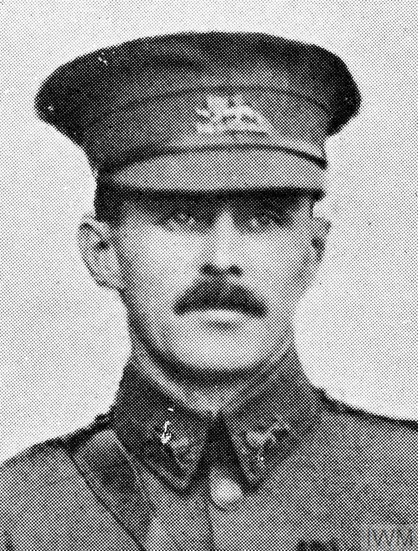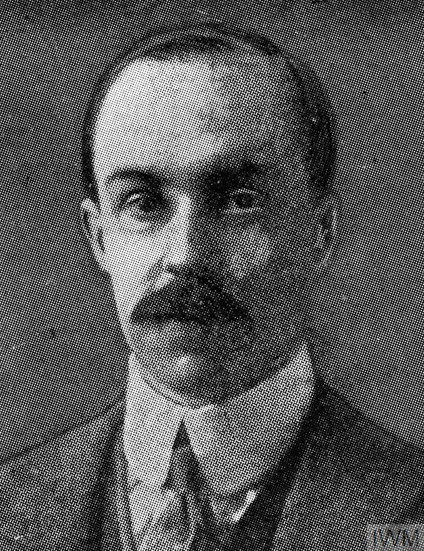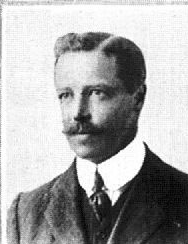Le Touquet Railway Crossing Cemetery
- Admin
- Dec 31, 2024
- 9 min read
Updated: Apr 15

The cemetery was in use throughout the war and was begun near were the railway used to cross the road to Le Bizet. In Rows A to E there are twenty eight graves of men from the 1st Rifle Brigade, 11th Infantry Brigade, 4th Division killed during the fighting here in October and November 1914. The 2nd Battalion Lancashire Fusiliers held the trenches to the east of the cemetery during the 1914 Christmas Day Truce. A German messenger who had crossed no man’s land bearing a white flag and had been taken into the British lines during the truce was kept as a PoW as he had seen behind the British lines. I have taken a small sample from the various regiments, of the men who are buried here.
Major John Henry Morrah, Mentioned in Despatches. 1st Battalion King’s Own (Royal Lancaster Regiment), 12th Infantry Brigade, 4th Division. Killed in action 18 October 1914, age 39. Grave A.6. The youngest son of Colonel. J. A. Morrah (60th Rifles) and Mary Morrah. He was married to Maud Florence Morrah and lived with their three children at 129 Hamlet Gardens, Ravenscourt Park, London. He was educated at Eastbourne College and then at the Royal Military College Sandhurst. He was gazetted to the Royal Lancashire Regiment as a 2nd Lieutenant in March 1896 and became a Lieutenant in November 1897 and promoted to Captain in May 1901. He saw service in the Boer War were he was severely wounded. On recovering from his wounds he served as adjutant to Indian Volunteers from 1908 to 1910 and in December 1912 was promoted to Major in his regiment. He was Mentioned in Despatches on 14 January 1915. The Battalion was engaged in an attack on the German positions around Le Touquet. They successfully advanced to the line of the railway and the cross roads and they consolidated the position. The War Diary records that Major Morrah and five Other Ranks were killed in this action. He was killed by a sniper.
Captain Selwyn Lucas Lucas-Tooth, 3rd Battalion attached 2nd Battalion Lancashire Fusiliers, 12th Infantry Brigade, 4th Division. Killed in action 20 October 1914, age 35. Grave A.10. Eldest son of Sir Robert Lucas-Tooth, Bart., and Helen Lady Lucas-Tooth. He was married to Everild Blanche Marion Lucas-Tooth and they lived with their five year old daughter Everild Vera at 3 Hans Crescent, London. He joined the 5th (Militia) Battalion Lancashire Fusiliers in April 1904 and was commissioned a Lieutenant in May 1905 and Captain of the 3rd Battalion in May 1907. On the 18 October the Battalion moved to attack the Germans with the aim of taking Le Touquet which was strongly held with houses being loopholed and trenches in the open ground. They pushed forward under supporting artillery fire and by evening had taken the village with the exception of the last few houses on the road junction and they consolidated their position on 19 and 20 October. There is no mention of casualties so, we can assume that Selwyn died during 20 October. His brothers Sir Archibald Leonard Lucas Lucas-Tooth, 2nd/1st ‘B’ Battery Honourable Artillery Company attached 126th Brigade, Royal Field Artillery, died of pneumonia on 12 July 1918 age 34 whilst on active service, and Douglas Keith Lucas Lucas-Tooth who was serving with the 9th Lancers when he was killed in September 1914.
Captain Penry Bruce Lendon, 3rd Battalion attached 1st Battalion King’s Own (Royal Lancaster Regiment), 12th Infantry Brigade, 4th Division. Killed in action 21 October 1914, age 31. Grave A.9. Son of R. W. P. and Mary A. B. Lendon. He was married to Emmeline Gertrude Lendon, and they lived at 10 York Gardens, Clifton, Bristol with their three daughters aged four, three, and two. He joined the 4th (Militia) Battalion in 1901 and in 1905, he was made a Member of the Royal Victorian Order for carrying the Colours, when King Edward presented the Colours to the Battalion. With the abolition of the Militia in the 1908 Haldane reforms he joined the Special Reserve until February 1914 and rejoined his regiment on the outbreak of war. He was killed at Le Touquet when the Battalion was making an attack to take the village. He was about to take cover in a loop-holed house when he heard the calls of a wounded man in a nearby ditch and went to his aid and was shot in the chest. He was one of three officers killed in this action. See also Major Nigel Lysons who was in command.

Major Nigel Lucius Samuel Lysons, 1st Battalion King’s Own (Royal Lancaster Regiment), 12th Infantry Brigade, 4th Division. Killed in action 21 October 1914, age 39. Grave A.8. Son of Gertrude Lysons, Hempstead Court, Gloucestershire, and the late Canon Samuel Lysons. He was educated at Winchester College and then joined the Battalion being gazetted a Lieutenant in 1898 and Captain in September 1901. He saw service in the Boer War. From July 1902 to July 1905 he was adjutant of the Battalion. He went with the Battalion to France and was orderly officer to the Brigadier-General commanding 41st Infantry Brigade returning to his Battalion in time to take part in the attack on Le Touquet. The Battalion was in the line at Le Touquet just south of the River Warnave. At dawn on 21 October the Germans made a strong attack on the positions at Le Gheer. The enemy got behind the left flank of ‘A’ and ‘C’ Company Major Lysons, who was in command, ordered them to retire 200 yards and dig in and half of ‘B’ Company was sent up to reinforce them. The trenches lost near the railway were retaken at once however, they could not recover the other trenches despite making two attempts. Nigel was one of three officers killed in this action.


Captain Otho Claud Skipwith Gilliat, 1st Battalion Rifle Brigade, 11th Infantry Brigade, 4th Division. Killed in action 30 October 1914, age 31. Grave A.1. Son of Howard and Helen Gilliat, of Stragglethorpe Old Hall, Newark-on-Trent. He was educated at Eton and from there went to the Royal Military College Sandhurst and was gazetted to the 4th Battalion Rifle Brigade in January 1901 and served in the Boer War. On the 30 October 1914, the Battalion was in the line at Le Touquet from 7am they were subjected to a heavy artillery barrage and then an infantry attack. The British guns prevented the enemy from advancing, the nearest the enemy came to the British line was 30 yards. The enemy infantry retired but their guns continued to shell the British line throughout the day. The War Diary records the only casualty as Otho Gilliat.
Captain George Arthur Murray Docker, 1st Battalion Royal Fusiliers attached 1st Battalion King’s Own (Royal Lancaster Regiment), 12th Infantry Brigade, 4th Division. Killed in action 17 November 1914, age 37. Grave A.11. Son of Arthur Robert and Florence Lucy Docker, Sydney, New South Wales. He was married to Anna Louisa Maud Josephine Stonhouse-Gostling (formerly Docker, nee Goodeve) and they had four children. Captain Docker was well known as a cricketer. He represented his college in cricket, football, and athletics, and played polo and cricket for his regiment. He also won many prizes for athletics and golf. He was a member of the Inner Temple, and was called to the Bar in June 1914. He was studying law at Oriel College, Oxford in 1899 when he volunteered with the 3rd (Militia) Battalion King’s Own (Royal Lancaster Regiment) and took part in the South African Campaign. He received his commission in the King’s (Liverpool Regiment) Gazetted 1900 as a Lieutenant and he was transferred to the Royal Fusiliers in 1901. In 1902, after six months sick leave, he went to Burma and joined the 1st Battalion Royal Fusiliers where he stayed until March 1904 when he was posted to the Depot at Hounslow. From there he rejoined the 1st Battalion in March 1906 at Parkhurst on the Isle of Wight and took a course in musketry and Maxim gun use at the School of Musketry at Hythe. He then took up the post, from April 1907 to July 1911, of Instructor of Military Law and Administration to ‘F’ Company at the RMC Sandhurst and during this time he was promoted. On leaving Sandhurst he went to India for a short time with the 3rd Battalion returning to the UK in April 1912 and was Adjutant to the 10th Middlesex Regiment. On the outbreak of war both the Colonel and Second-in-Command had to go on sick leave and Captain Docker took temporary command as well being Adjutant. The Battalion received orders to embark for India in October 1914 however, he was ordered to take a draft of the 3rd King’s Own (Royal Lancaster Regiment) to join the 1st Battalion in Flanders. He landed in France on 8 November and joined the Battalion on 15 November and went into the trenches on 16 November and was killed on 17 November.
Killed by German Mine Explosion
On the 13 May 1915, the 2nd Battalion Sherwood Foresters were in the line at Le Touquet trenches when at 4.20am the Germans opened an artillery barrage and heavy rifle fire on the left of the line and at 5am blew a mine half way between their trench and the British trench known as Railway Fort. The casualties were four Other Ranks killed and twenty wounded. The dead are: 7285 Private Benjamin Stanley ‘Bert’ Shirt, 2nd Battalion Sherwood Foresters (Notts and Derby Regiment), 18th Infantry Brigade, 6th Division. Killed in action 13 May 1915. Grave F.3. He was employed as a Labourer and living in Buxton Road, Stockport with his wife Alice when he enlisted on 15 September 1914 and giving his age as 25 years and seven months. He was a Special Reservist having previously served in the Territorial force. He joined the Battalion on 27 April 1915. 2633 Private Wallace Kerry, 2nd Battalion Sherwood Foresters (Notts and Derby Regiment), Killed in action 13 May 1915, age 30. Grave F.2. Son of Thomas and Annie Kerry. He was married to Emily Oldham, she remarried, and had two children and lived at 43 Medway Street, Old Radford, Nottingham. His employment is listed in the 1911 Census as was working as a Cycle Works Labourer. He was a Special Reservist having previously been in the Territorial force. 3391 Private Richard Penn, 2nd Battalion Sherwood Foresters (Notts and Derby Regiment), Killed in action 13 May 1915. Grave H.1. He was employed as a coal miner and was a Special Reservist having served previously in the Territorial force. He was unmarried. His next of kin was his brother Frank.

Boy Soldiers
4697 Private Thomas Henry Woolley, 2nd Battalion Sherwood Foresters (Notts and Derby Regiment), Killed in action 13 May 1915, age 17. Grave F.1. He lived at 40 Bromley Street, Nottingham with this parents Thomas and Elizabeth and his three sisters and four brothers. Thomas obviously lied about his age when enlisting.
In the Ypres Salient, we are drawn to the graves of 6322 Private John Condon, 2nd Battalion Royal Irish Regiment, killed in action in May 1915, age 14 and the youngest known battle casualty of the war, although this is now questioned, and the grave of 5750 Valentine Strudwick, 8th Rifle Brigade, killed in action in January 1916, age 15. Strudwicks grave attracts a great deal of attention because of its location at Essex Farm and that locations association with Lieutenant Colonel John McCrae and the poem ‘In Flanders Fields.’ There are many more ‘Boy Soldiers’ buried across the Salient and who are not remembered and these include three from Falkirk District Private William Jamieson, age 17, Private James Duchart, age 16, and Private Herbert Richmond, age 17,
There were many reasons why underage boys enlisted in 1914 and 1915 boredom with their jobs, looking for adventure, and escaping family pressures. The checks on age and qualification to enlist were more relaxed than later in the war. The army preferred younger recruits, there was a history of boy soldiers in the army going back over one hundred years. At Waterloo the army had a number of boy soldiers in their ranks. The army preferred younger recruits as they would follow orders and accept discipline more readily than older men. The boys had a belief in their own indestructibility and were prepared to take more risks. We tend to also forget the number of boys who served in the Royal Navy and we do not seem to have the same passionate response to their service as we do those who fought on the Western Front. With regards to the army, the difference was the sheer number who served on the Western Front and there were more boy soldiers in 1915 than served in Wellington’s army at Waterloo. For further reading on this subject I recommend Richard Van Emden’s excellent book Boy Soldiers of the Great War.
The cemetery was designed by G H Goldsmith.
Cemetery Location
Le Touquet Railway Crossing Cemetery is located 15 Km south of Ieper town centre, on a road leading from the Rijselseweg N365, which connects Ieper to Wijtschate, Mesen, Ploegsteert and onto Armentieres. From Ieper town centre the Rijselsestraat runs from the market square, through the Lille Gate (Rijselpoort) and directly over the crossroads with the Ieper ring road. The road name then changes to the Rijselseweg. 2 Km after the village of Ploegsteert lies the left hand turning onto Witteweg (Chemin de la Blanche). The first right hand turning from the Witteweg leads towards Motor Car Cemetery. At the end of this road lies the left hand turning towards Touquet. This road is called rue du Touquet. The cemetery is located 1 Km along this road after passing Tancrez Farm Cemetery.
Burials
UK – 74
KUG – 24
There are three special memorials that commemorate three casualties known to be buried in the cemetery.



























Comentarios